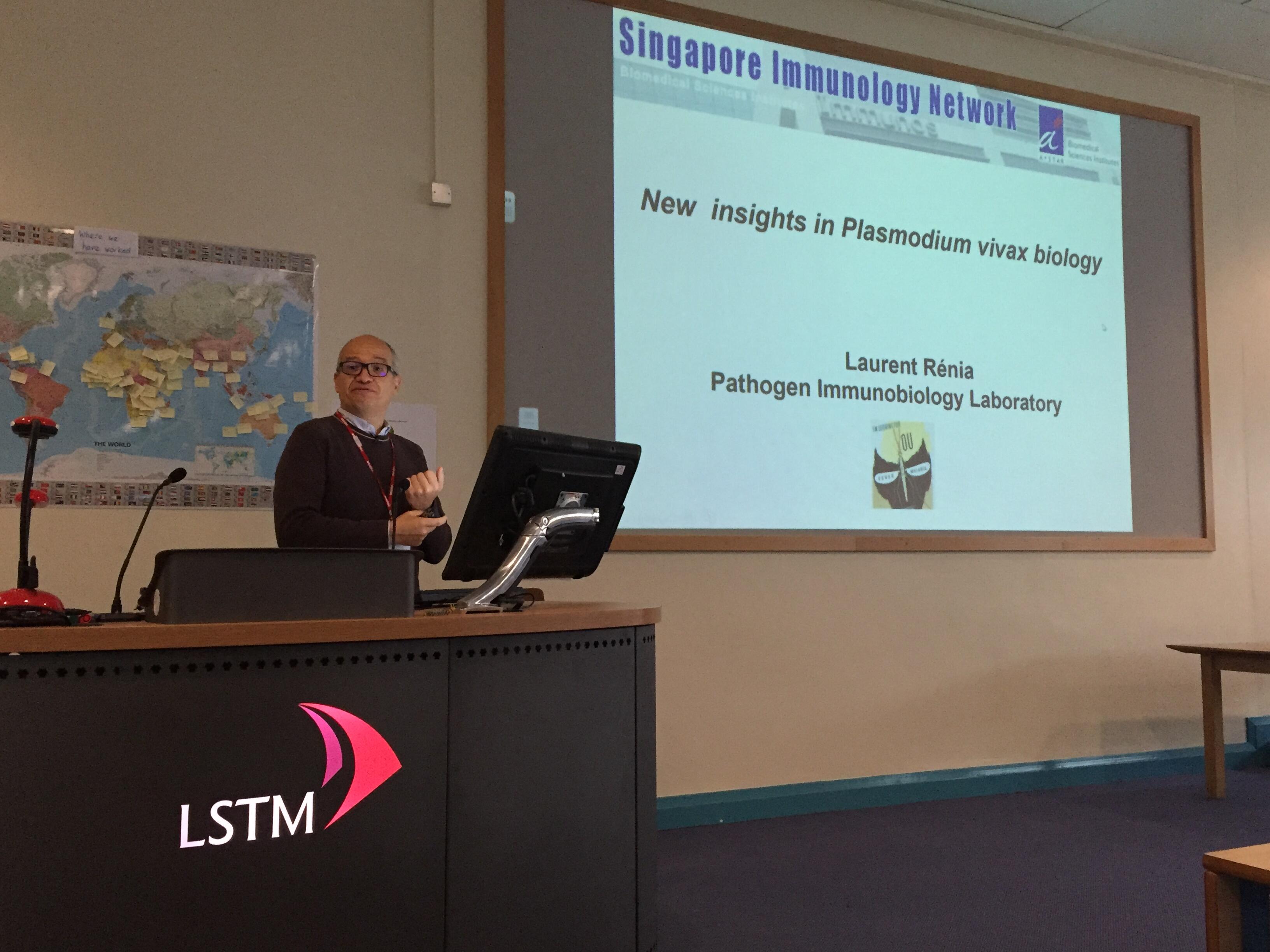
LSTM’s seminar series continued last week with a presentation by Professor Laurent Rénia, Executive Director of the Singapore Immunology Network and Principal Investigator at the Laboratory of Pathogen Immunology. His talk, entitled: New insights on Plasmodium vivax biology, was introduced by LSTM’s Professor Alister Craig.
Prof Rénia began by explaining that while Plasmodium falciparum is the most common form of malaria in the tropics, that Plasmodium vivax is the most common in South East Asia. While Singapore has been malaria free since the 1970s it sits at the centre of the one of the two major geographical regions suffering from this infection, and the work that Prof Rénia and his team carries out takes place in clinics along the Thailand / Myanmar boarder. He went through the P. vivax life cycle, pointing out that it has the capacity to remain dormant in the liver, allowing the disease to recur.
The standard treatment is the drug Chloroquine, but due to resistance the drug is no longer effective in that geographical region, meaning that the need for new drugs to treat the disease are now of vital importance. Prof Rénia explained that one of the problems with carrying out assays on new drug candidates is that the parasite has to come directly from the patient through infected blood as it cannot be cultured, this combined with the low parasitaemia has made the process traditionally difficult and expensive. However he went on to talk about some of the advances that they have made in techniques to derive isolates from the blood samples which can then be enhanced so that a number of different assays can be carried out ex vivo at the same time.
Prof Rénia further explained that traditional microscopic assays are incredibly laborious. He talked about new flow cytometry methods that have been developed for assaying parasite development and gave examples of some novel drug candidates that have been tested in this way, looking at the machinery that has enabled them to move to field cytometry so that samples can be tested on site.
He concluded by answering a number of questions about the research and looking forward at some of the questions and issues that need to be addressed in the future in order to develop much needed new and effective drugs for P. vivax.